As a scientific research-grade inverted microscope designed to meet advanced life science research, 900 can meet your various needs. It is a versatile microscope that can realize bright field, dark field, phase contrast, polarized light, DIC, fluorescence, and other observation methods. Even confocal and super-resolution required for top life science research can be achieved on this microscope. Fully consider the user’s operating habits and adopt ergonomic design to greatly reduce mechanical fatigue caused by long-term observation work. 950 also adopts high-speed electric control to simplify and visualize complex operations, making the operation easier and easier.
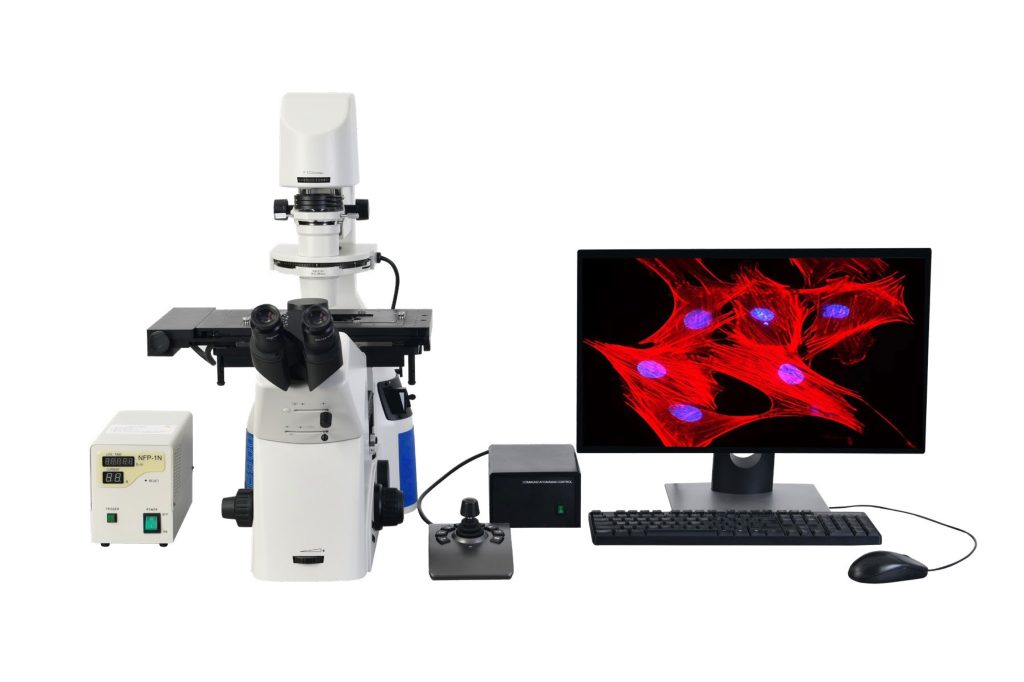
Fully motorized microscope
Multiple electric components for fast, automatic operation
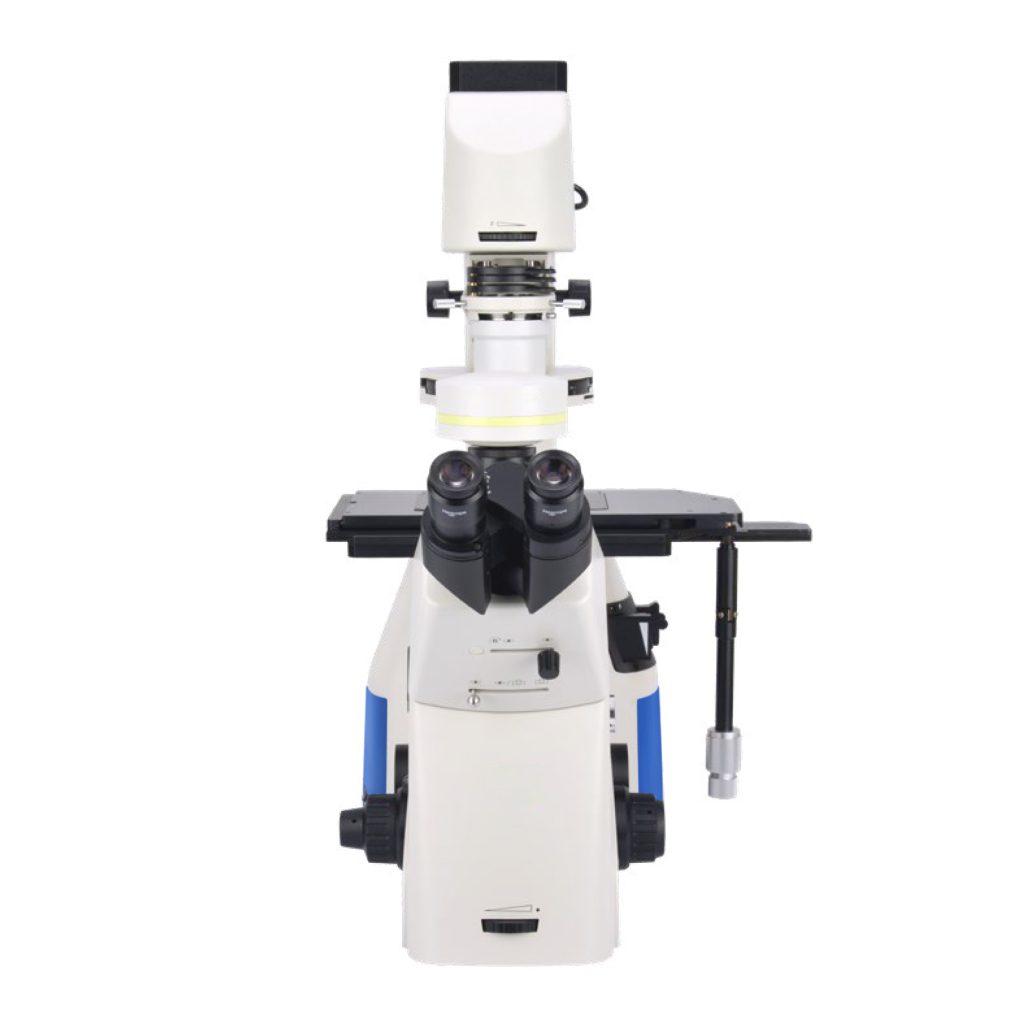
Basic scientific research-grade inverted microscope
Can realize bright field, phase contrast, DIC, dark field and other observation methods
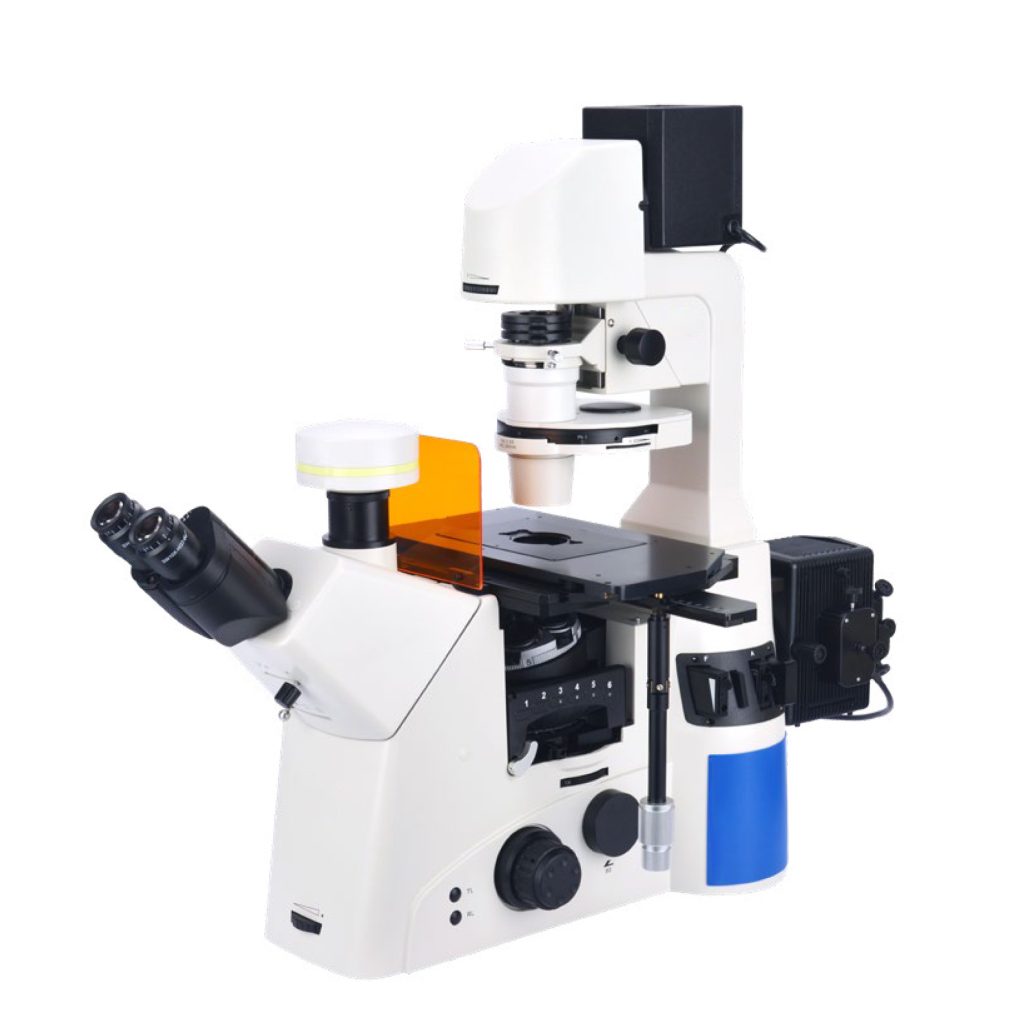
Fluorescence scientific research-grade inverted microscope
Based on model 910, the fluorescence observation function is upgraded.
Type 910 Basic scientific research-grade inverted microscope
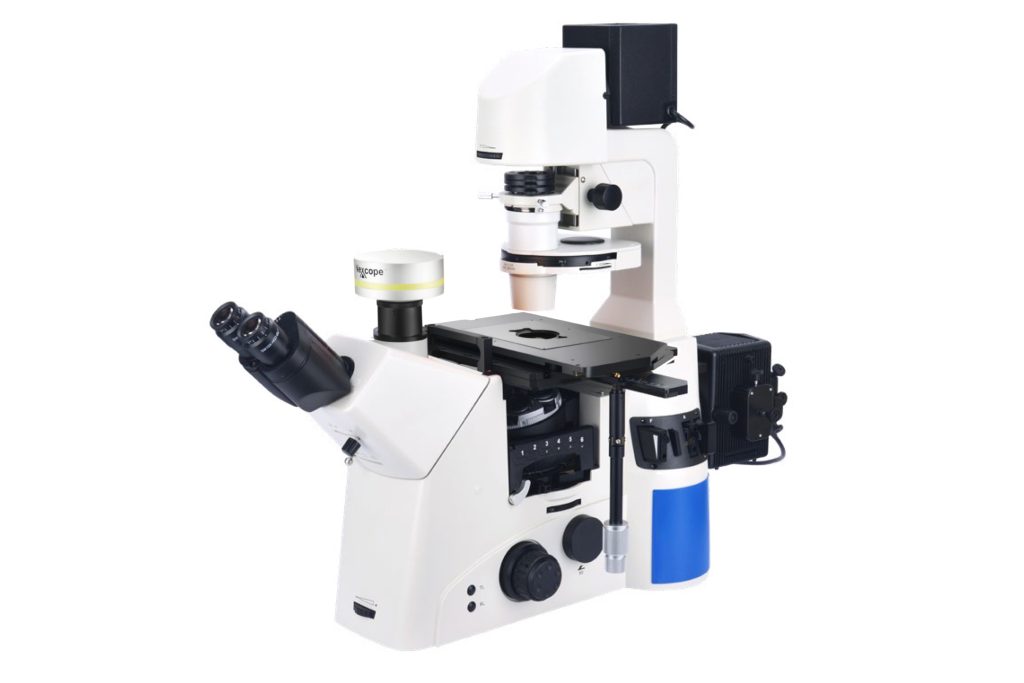
Bright-field
Modular design provides multiple flexible imaging methods
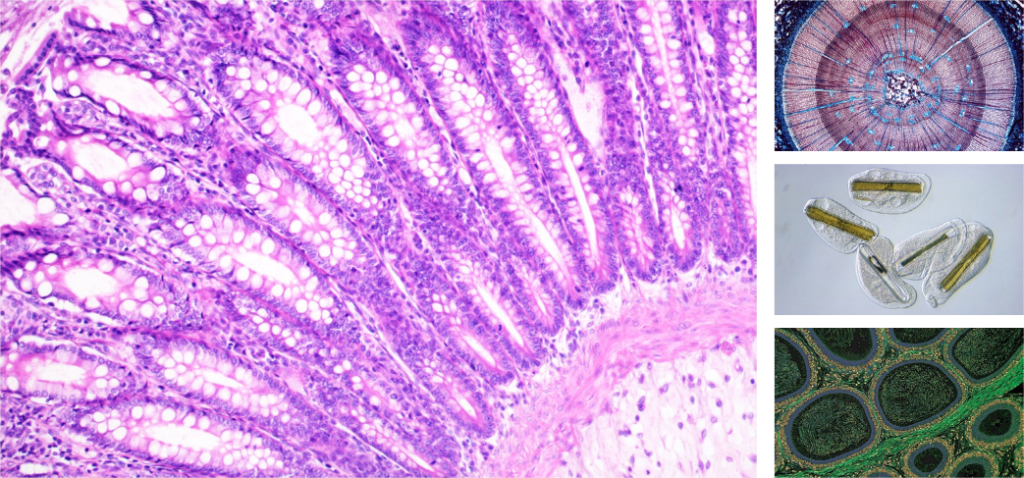
Bright-field observation
The unique NIS infinity optical system, combined with the semi-apochromatic fluorescence objective lens, effectively eliminates field curvature, chromatic aberration, spherical aberration, coma, and other imaging problems. The image is brighter, and higher super-resolution and flatness can be obtained at all magnifications.
Phase contrast observation
Phase contrast is an optical contrast technology that uses a phase contrast objective lens and a focusing ring. High-efficiency halogen lamps provide a bright light source for the system, enabling clear images even at high magnifications.
Differential interference (DIC)
Differential interference is a very cost-effective optical technology that does not require expensive optical components. Relief Contrast Using only a brightfield objective and two-phase contrast adjustment sliders, for thicker samples, such as induced pluripotent stem cells, differential interference can provide pseudo-three-dimensional glare-free images that typically occur using traditional phase contrast viewing methods halo. In addition, differential interference can use glass Petri dishes and is a very adaptable observation technique.
Type 910-FL Fluorescence scientific research-grade inverted microscope

Fluorescence
Provide you with reliable, clear, high-resolution fluorescence images
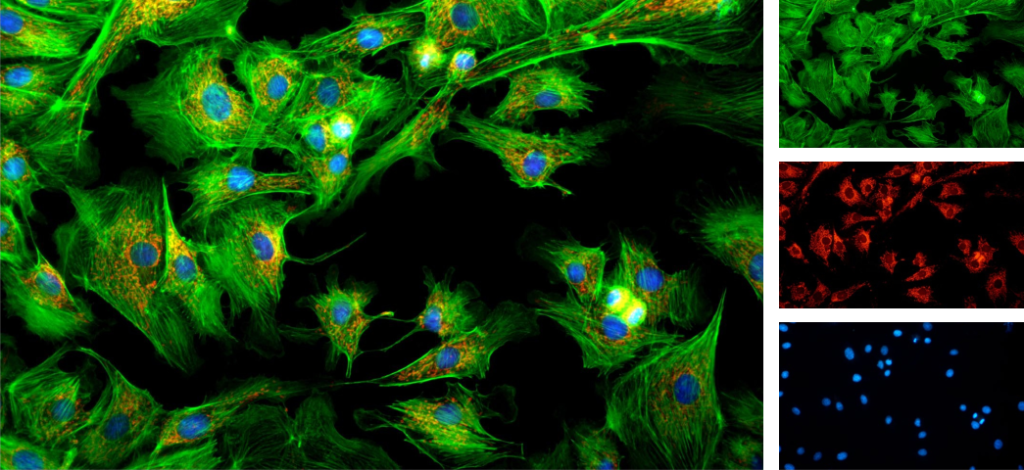
Using the latest coating technology
Using the latest advanced sub-ripple elimination coating technology, the fluorescence transmittance is higher, the cutoff is sharper, and the detection efficiency is higher.
Fluorescence observation is more comfortable
All fluorescence filter components use ultra-high-performance filters. The fluorescence illumination pillar can be equipped with six color filter sets to image multiple stained specimens at the same time. Highly sensitive fluorescence enables bright and high-contrast imaging. The leading coating technology also reduces scattered light and autofluorescence, ensuring a higher performance-to-noise ratio.
Type 950 Fully motorized microscope-grade inverted microscope

A variety of electric component combinations enable fast and accurate operation
You can control various motorized parts of the microscope through software, such as objective lens conversion, focus, condenser conversion, fluorescence module conversion, etc. Quick and easy operation of this scientific-grade inverted microscope not only increases your work efficiency, but also reduces the exposure time of cells, reduces phototoxicity, and obtains more accurate and valuable experimental results.
Get clear observations with a variety of fluorescent dyes
- Fluorescence excitation module turntable type: easier and more flexible
It adopts a multi-functional six-station turntable structure, which can be easily removed from the host to facilitate the replacement of various fluorescence excitation modules.
- Easy and fast operation, NIB900 aperture slider
Reflective field diaphragm, aperture diaphragm and filter insert, three different types of diaphragm sliders demonstrate the versatility of the NIB900 for in vivo cell research. When using the aperture diaphragm and the Yingguang filter insert, the optimal fluorescence intensity can be adjusted according to the selected fluorescence module and objective lens.
·
- Fluorescent mercury lamp power box
·
The intelligent fluorescent mercury lamp power box adopts an air-cooling design, with low noise and stable voltage. The unique automatic memory usage time and shutdown time can ensure that the mercury lamp is fully cooled to the greatest extent, protect the life of the mercury lamp, and improve mechanical efficiency.
There is room for expansion to meet the needs of scalability research
Power your life science research forward
- Observation Headband Bertrand Spectrum
The built-in Bertrand mirror device can be used to observe the pupil of the objective lens when moving into the optical path, and plays a role in centering the telescope.
- Tiltable transmitted lighting column
The tiltable transmitted illumination column ensures that users have a larger working space and can easily change samples.
- Removable mechanical stage
The high-performance three-layer mechanical loading platform is flexible in operation and accurate in positioning. It is equipped with a variety of platform mounting brackets that can accommodate various culture bottles and cell culture vessels.
- Multi-port optical path exit
There is an optical output selection dial on the left side of the microscope, which facilitates allocating optical images to different ports and provides expansion space for more optical image applications.
Easy to operate
- Microscope usage status display
To facilitate the use of the microscope in a dark room, a 4.3-inch touch screen (optional) can be added to the front panel of the microscope to display the microscope usage status and adjust the microscope. The functions are:
- Converter magnification screen display
- Multi-function turntable band screen display
- Brightness screen display and memory touch adjustment brightness
- Touch screen magnification display and multi-function turntable band display setting function
- The system condenser meets various test needs
Brightfield, phase contrast, and DIC observation methods provide you with maximum choice for your experiments.
Convenient lighting control
The control buttons of the NIB900 scientific-grade inverted microscope are reasonably arranged and easy to operate, simplifying the workflow. For example, the transmitted lighting switch and epi-fluorescence lighting shutter control buttons are arranged on the right side of the fuselage.
Switchable intermediate ratio
Through smooth turntable operation, the intermediate magnification can be quickly switched between 1x and 1.5x.
Appendix
- Loading pallet
Equipped with Terasaki pallets, 96-well plates, Ø38mm, and Ø54mm culture dish pallets to meet various experimental needs.
- Camera port
Provides 0.4X, 0.5X, and 1XC interfaces for users to choose from, which are used to connect cameras, cameras and other image acquisition systems.
- N-iPLFN PH plan semi-apochromatic objective
Multi-layer coating technology, with semi-apochromatic objectives, can compensate for spherical aberration and chromatic aberration from ultraviolet to near-infrared. The 20X and 40X semi-apochromatic objectives have built-in correction rings to correct coverage differences caused by non-standard coverslip thickness. The highly sensitive fluorescence performance ensures the sharpness, clarity and color reproduction of the collected images.
- Fluorescent power supply
Mercury light source
Standard Osram 100W HBO ultra-high pressure ball mercury lamp has high fluorescence brightness and uniform field of view. At the same time, a light gate is installed at the front end of the vertical illuminator to cut off the fluorescent lighting at any time and protect the sample.
Metal halide light source
Optional 75W metal halide light source with lamp life of up to 2000 hours. The light intensity is greater, and the field of view is brighter and more uniform.
LED light source
4-color LED light source with adjustable brightness and a lamp life of tens of thousands of hours. It has low phototoxicity and is highly friendly to delicate samples such as cells. It solves the problems of traditional mercury lamp fluorescence requiring preheating, cooling and excessive temperature during use.
NOMIS Basic, a new revolution in microscopic observation
Today’s research work environment requires tools that can adapt to everyone’s different workflows. NOMIS Basic microscopy image analysis software allows seamless connections between acquisition, processing, measurement and microscopy. NOMIS Basic also provides observation tools for today’s popular operating systems.
- Measurement function
In cell observation and section observation, the measurement function is required. To determine data such as cell size, intercellular gaps, synapse length, etc. NOMIS Basic provides measurements of distances, angles, rectangles, circles, ellipses, and more.
- Quick splicing
By collecting and importing images in real time, NOMIS Basic can quickly stitch together to form a large-sized, high-resolution image.
- Cell count
You can customize cell counting requirements, automatically count and count cell shape information, including: size, position, volume, perimeter, brightness, etc. And all data including processed images can be saved into EXCEL tables.
- Fluorescence image synthesis
By collecting or importing images of different fluorescence channels, users can obtain fluorescence synthesized images. For the image of each channel, the displacement in the X and Y directions can be adjusted to achieve fine-tuning effects.
- Depth of field blending
Users can collect multiple images with different focal lengths by fine-tuning the focus and combine them into one image for output. Suitable for specimens that require a certain depth of field or poorly made sections.